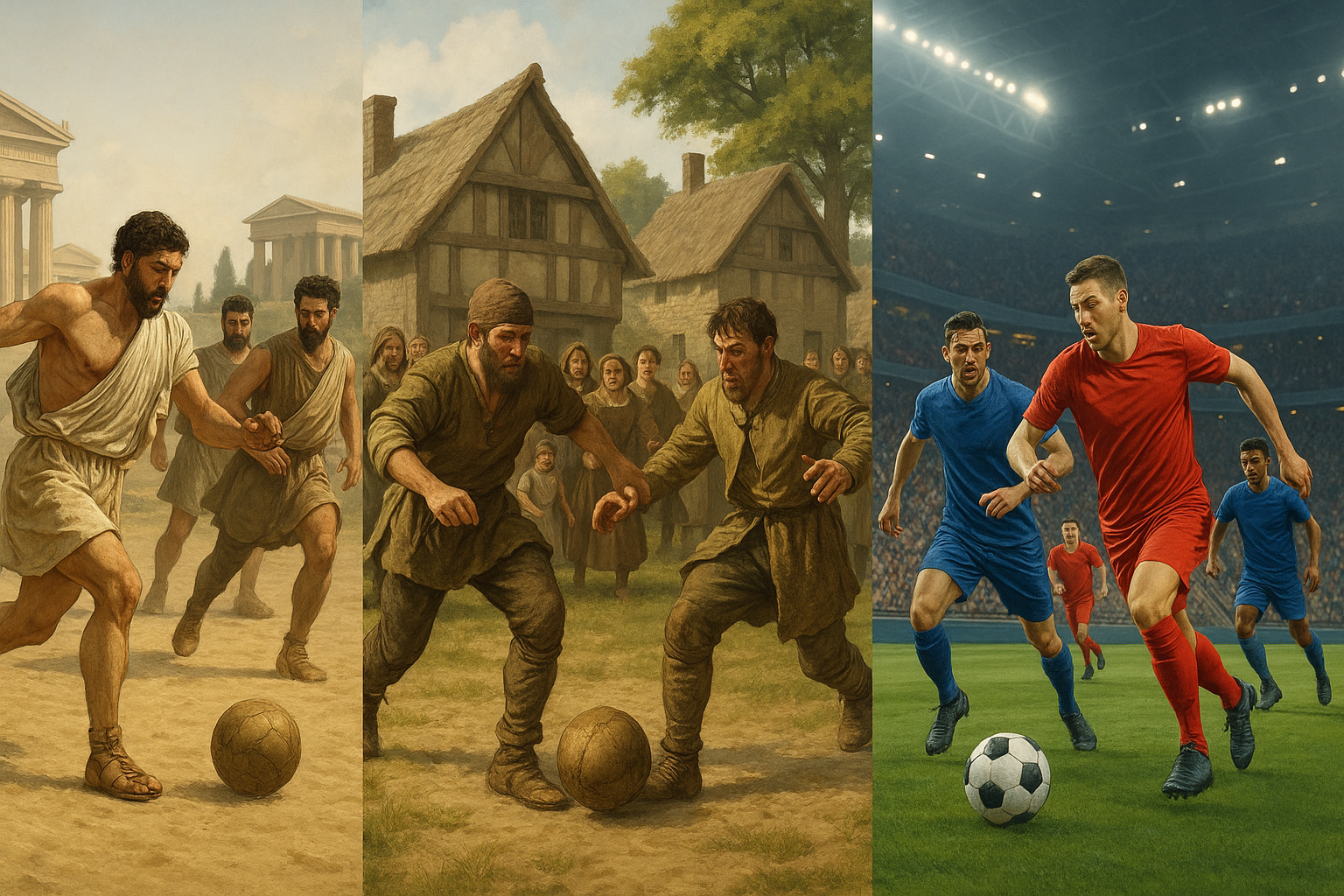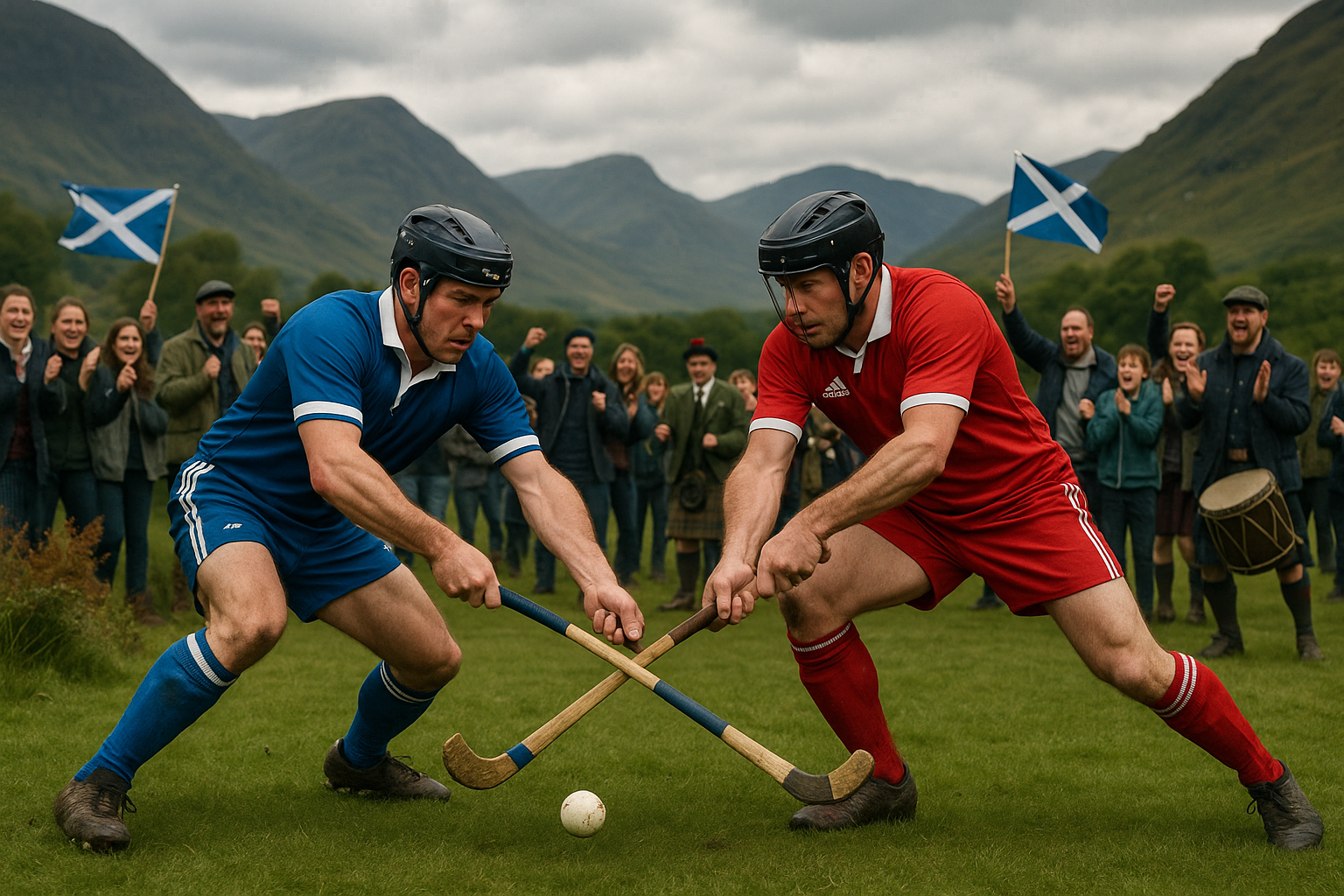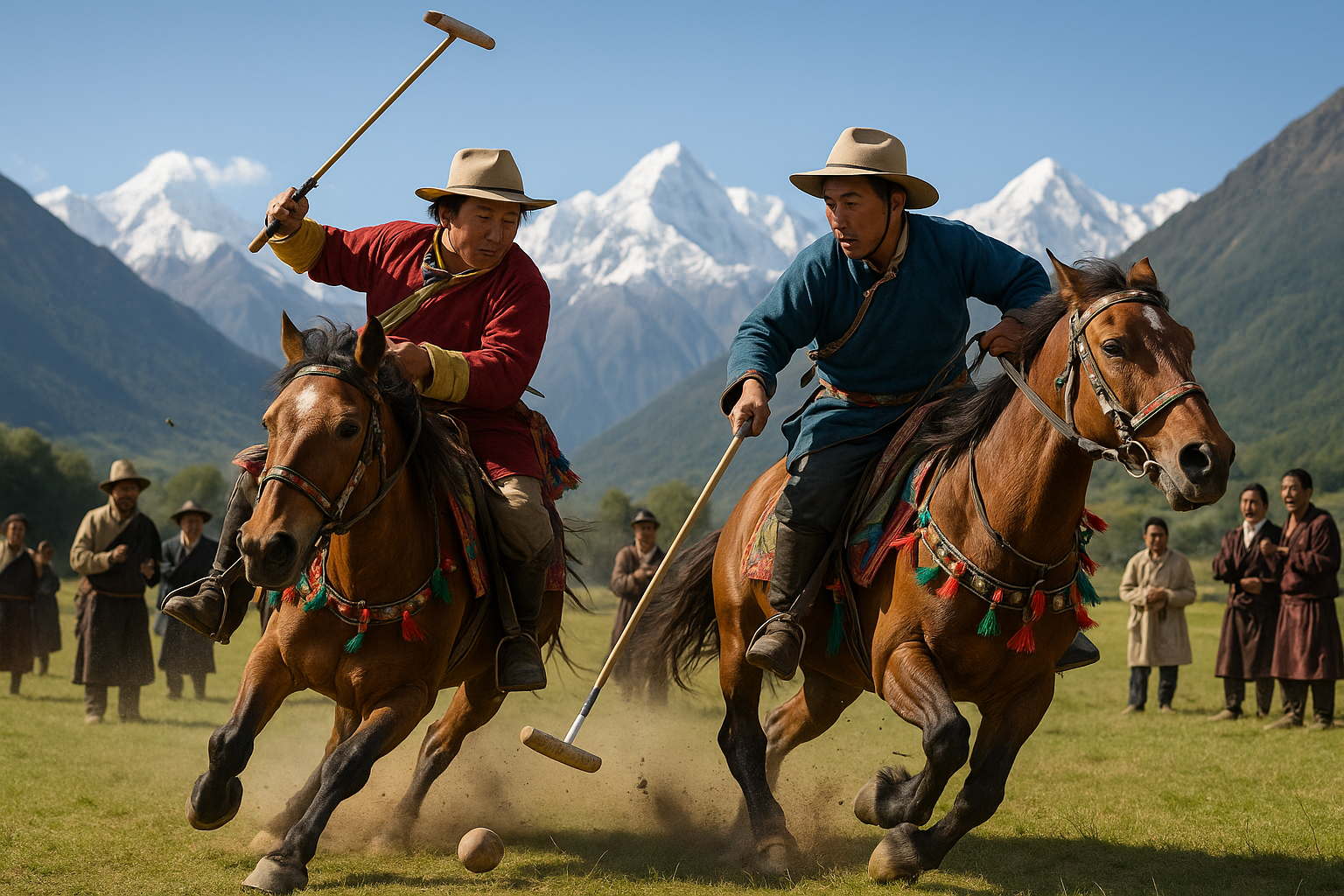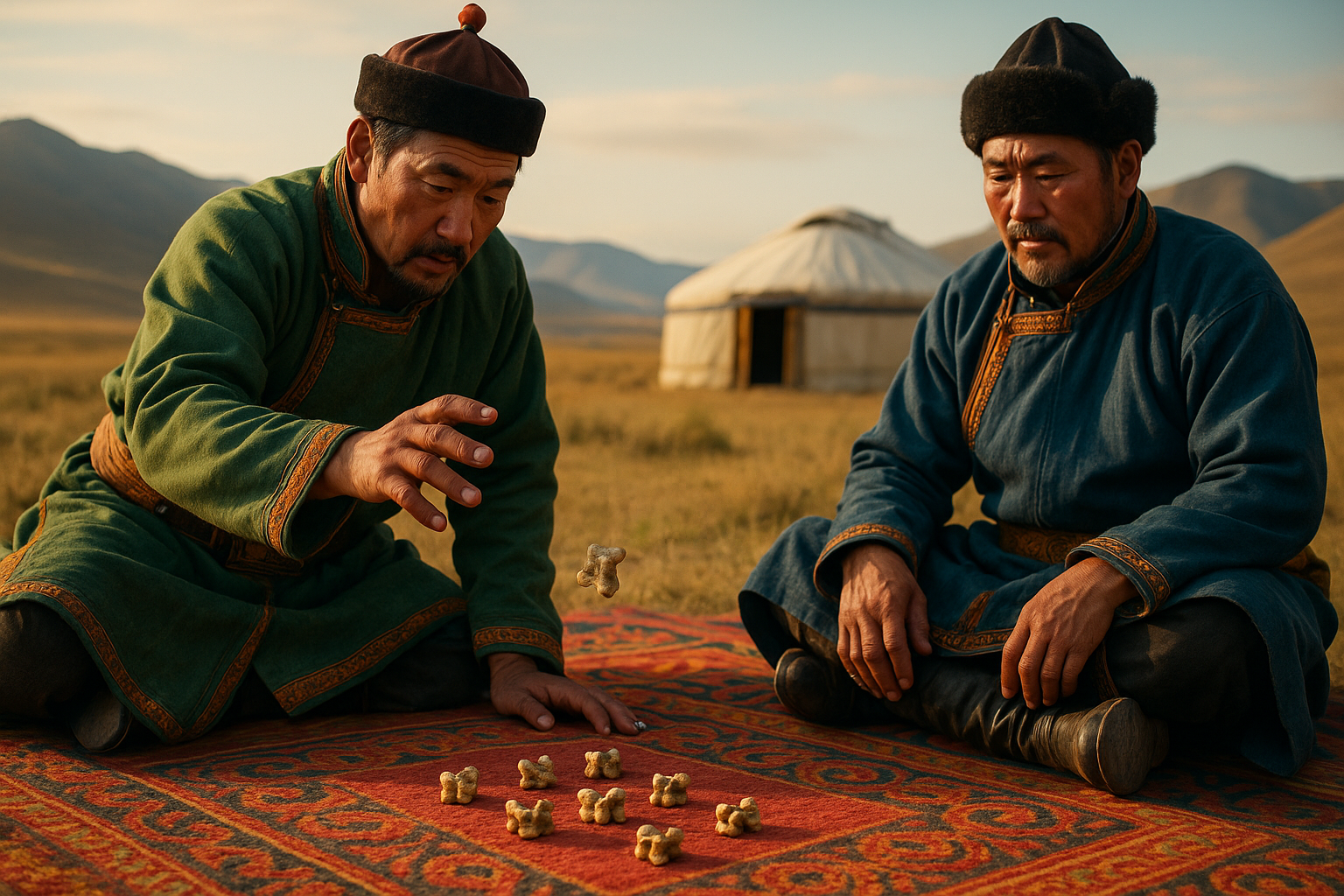Football, or soccer as it’s known in some parts of the world, isn’t just a game—it’s a global phenomenon that transcends borders, cultures, and generations. 🌍 From bustling streets in Brazil to the sprawling fields of England, the sport has captured the hearts of millions, creating a shared language of passion and competition. But how did this beautiful game evolve from its ancient origins to become the modern spectacle we know today? This journey through time is not only fascinating but also reveals much about human society and culture.
As we kick off this exploration, imagine stepping back in time over two millennia to ancient Greece. Here, a game known as “Episkyros” was played, involving two teams, a ball, and plenty of physical contact. While it might not have been the direct ancestor of modern football, Episkyros shared the core elements of teamwork and strategy. The Greeks may have passed the baton to the Romans, who had their own version known as “Harpastum.” This version was even more physical and tactical, emphasizing the importance of space and positioning—concepts very much alive in today’s football tactics.
Fast forward a few centuries, and we find ourselves in medieval Europe. The Middle Ages saw the emergence of “mob football,” a chaotic and often violent pastime with few rules and an unlimited number of players. These matches were more about community rivalry than sporting prowess, but they laid the groundwork for the codification of the sport in later years. 🏰 As we journey through history, we see how football began to take shape, with various cultures adding their own twists and styles to the game.
The 19th century marks a turning point in the evolution of football. With the Industrial Revolution, people flocked to cities, bringing together diverse groups who sought new forms of entertainment. Football became the perfect outlet, growing in popularity across England. It was during this time that schools and clubs started to formalize rules, leading to the creation of associations that would standardize the game. This era saw the birth of iconic clubs and leagues that still resonate with fans today.
As we delve deeper into this narrative, we’ll explore how these early developments set the stage for the global spread of football. The establishment of the Football Association in 1863 in England was pivotal, providing a structured framework that allowed the game to flourish internationally. Soon, nations across Europe and South America were adopting and adapting the rules to fit their cultural contexts, leading to the diverse styles of play we see in the modern game. From the passionate flair of South American teams to the disciplined strategies of European clubs, the sport continued to evolve and inspire.
But the journey doesn’t stop there. The 20th century saw football grow into a cultural juggernaut, with the first FIFA World Cup in 1930 setting the stage for the sport’s global dominance. This century witnessed technological advancements, media coverage, and the rise of legendary players whose skills transcended the sport, turning them into cultural icons. ⚽ The evolution of football tactics, from rigid formations to fluid systems of play, reflected broader changes in society and technology.
In today’s era, football is more than just a sport; it’s a multi-billion-dollar industry that influences everything from fashion to politics. The modern game is defined by its global reach, with leagues and tournaments broadcast to billions, uniting people from all walks of life in their love for the game. The impact of technology, including video assistant referees (VAR) and data analytics, continues to shape how football is played and consumed, ensuring that the game remains dynamic and relevant.
Throughout this article, we will explore these transformative moments in football’s history, examining how each era contributed to the sport’s current form. We will delve into the tactical revolutions that have shaped the way teams play and the cultural impacts that have made football a cornerstone of global identity. Whether you’re a die-hard fan or a curious newcomer, this journey through the evolution of football promises to be as thrilling and enlightening as the game itself.
So, lace up your boots and get ready for a deep dive into the rich history and evolution of the beautiful game. Each twist and turn in this journey reflects not only changes in the sport but also broader shifts in our world. Let’s explore how football has become the global phenomenon that captures our hearts and imaginations today. 🌟

Conclusion
Creating a conclusion with such an extensive word count while ensuring it is meaningful and engaging can be quite challenging, but let’s craft a comprehensive and inspiring wrap-up for the article on the evolution of football:
The journey of football from the ancient game of Episkyros to the modern global phenomenon we know today as soccer is nothing short of fascinating. This evolution is not merely a story about a sport; it reflects the intricate tapestry of human culture, innovation, and global unity. By tracing the origins of the game, we delve deep into a history that connects generations, transcends borders, and unites millions of people around the world.
As we explored in the article, Episkyros was more than just a physical activity in ancient Greece; it was a communal event that brought people together. With rules that emphasized teamwork and strategic planning, it laid the groundwork for future ball games. This ancient sport highlighted the human desire for organized play, competition, and camaraderie, elements that are very much present in today’s version of the game. ⚽️
The transformation from Episkyros to modern football involved numerous iterations and influences, from the Roman Harpastum to the medieval forms of folk football. Each iteration contributed its own set of rules, styles, and cultural significance, reflecting the social and political climates of their respective times. The codification of football in 19th-century England marked a pivotal point, leading to the establishment of standardized rules that paved the way for international competitions.
With the formation of the Fédération Internationale de Football Association (FIFA) in 1904, football embarked on a new era of globalization. Today, it stands as a symbol of global unity and diversity, celebrated in every corner of the world. The FIFA World Cup, for instance, is more than a tournament; it is a celebration of different cultures and a testament to the universal appeal of the sport. 🌍
Moreover, football’s influence extends beyond the field. It has the power to inspire social change, promote equality, and bridge cultural gaps. Initiatives such as Football for Peace and Common Goal illustrate how the sport can address pressing global issues, from promoting education and health to supporting economic development in underprivileged communities.
Reflecting on this rich history, it is crucial to recognize the profound impact football has on society. It is not just a game; it is a global language that speaks to the hopes and dreams of millions. Whether it’s a child playing in the streets of Rio de Janeiro or a professional athlete on the pitches of Europe, the essence of football remains the same: passion, unity, and a shared love for the beautiful game.
As you ponder on the evolution of football, consider how this journey mirrors broader societal changes and how sports can be a force for good. Whether you are a player, a fan, or simply an enthusiast of history and culture, there is much to learn and appreciate from this magnificent sport.
We encourage you to share this article with friends and family, engage in conversations about the role of sports in society, or perhaps even explore the historical roots of other sports. Your insights and perspectives can further enrich the dialogue around the evolution of sports and its impact on our world.
Feel free to leave a comment below sharing your thoughts or personal experiences with football. How has the sport impacted your life? What do you see for its future? Let’s keep the conversation going, as each voice adds to the rich narrative of the beautiful game. 🗨️
Thank you for joining us on this journey through time, exploring the evolution of football. May it inspire you to appreciate not just the game itself, but the powerful connections it fosters across cultures and communities. Until the next kickoff! 🚀
Toni Santos is a cultural revivalist, play historian, and kinetic storyteller who travels time through the games we left behind. With a deep reverence for lost pastimes, Toni excavates forgotten sports, ancestral competitions, and community games that once defined how people moved, bonded, and thrived. From ancient Mesoamerican ball courts to medieval street games, nomadic strategy contests, and pre-colonial ritual play, Toni revives rulebooks that were never digitized—and champions a worldview where games weren’t just leisure, but meaning, skill, and survival. Combining ethnography, movement studies, game design, and oral tradition, he reconstructs games piece by piece, consulting archives, elders, and fragments of folklore. His mission is not only to replay the past, but to inspire new generations to rediscover joy in rules that challenge, unite, and reflect forgotten values. At the helm of Vizovex, Toni documents these rediscoveries with playable guides, interactive reconstructions, motion-capture reenactments, and interviews with guardians of ancient play. His platform speaks to: Experimental game designers and kinetic anthropologists Educators looking to decolonize sports curriculums Movement artists and cultural preservationists Playful minds seeking what we once valued in the games we played Whether it’s reimagining a Viking endurance sport, mapping traditional Māori games, or crafting tournaments for extinct athletic rites, Toni urges us to move like our ancestors once did—and play with purpose again.



